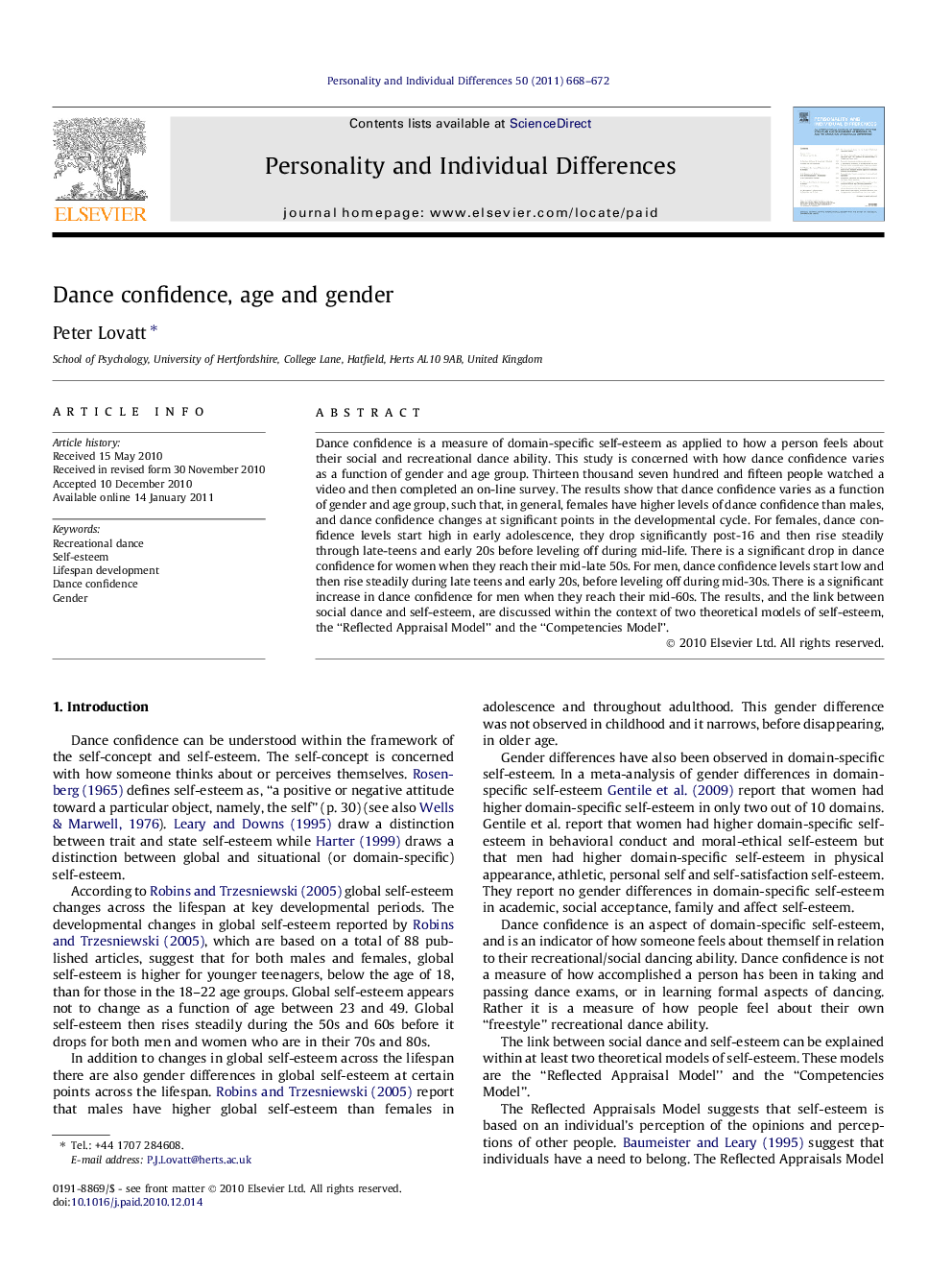| Article ID | Journal | Published Year | Pages | File Type |
|---|---|---|---|---|
| 891657 | Personality and Individual Differences | 2011 | 5 Pages |
Dance confidence is a measure of domain-specific self-esteem as applied to how a person feels about their social and recreational dance ability. This study is concerned with how dance confidence varies as a function of gender and age group. Thirteen thousand seven hundred and fifteen people watched a video and then completed an on-line survey. The results show that dance confidence varies as a function of gender and age group, such that, in general, females have higher levels of dance confidence than males, and dance confidence changes at significant points in the developmental cycle. For females, dance confidence levels start high in early adolescence, they drop significantly post-16 and then rise steadily through late-teens and early 20s before leveling off during mid-life. There is a significant drop in dance confidence for women when they reach their mid-late 50s. For men, dance confidence levels start low and then rise steadily during late teens and early 20s, before leveling off during mid-30s. There is a significant increase in dance confidence for men when they reach their mid-60s. The results, and the link between social dance and self-esteem, are discussed within the context of two theoretical models of self-esteem, the “Reflected Appraisal Model” and the “Competencies Model”.
